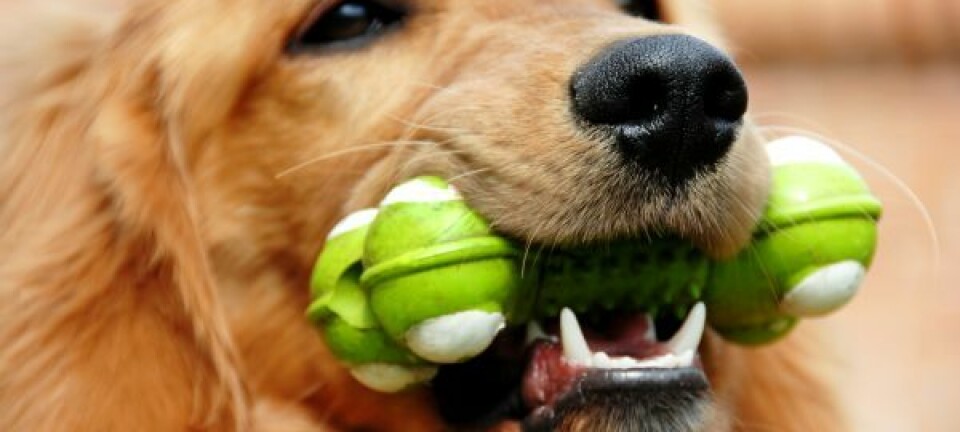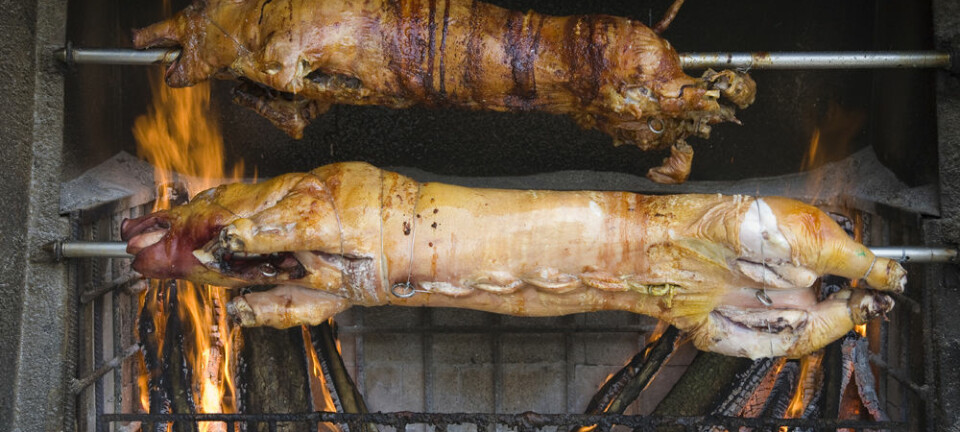
Should dogs be neutered?
It is against the law to neuter dogs in Norway, while in the USA nearly all male dogs are castrated. What is preferable practice for the dogs - and their owners?
Denne artikkelen er over ti år gammel og kan inneholde utdatert informasjon.
Joppe, a schapendoes or Dutch sheepdog, glances up at its owner Nina Thorstensen.
He whimpers, and Nina understands something is amiss. She looks him over and sees that his testicles are red and irritated. His pain apparently mounts and later she takes him to a veterinarian, who can’t pin down the cause of the affliction.
The vet concludes that the best option would be to remove the inflamed testicles because they are causing so much pain.
But experts disagree about neutering and the threshold for neutering dogs is highin Norway compared to for instance practice in the USA, where nearly all male dogs are castrated.

Focus should be on training
The Norwegian Animal Welfare Act makes it clear that surgical procedures are not to be used to adapt animals to the needs of humans, unless strictly necessary.
“It’s not the dog’s need, given there are no medical considerations,” says Torunn Knævelsrud, head of Section for Animal Welfare and Fish Health at the Norwegian Food Safety Authority (NFSA).
According to the NFSA it’s essential for vets to make decisions regarding the necessity of a neutering or spaying on a case-by-case basis.
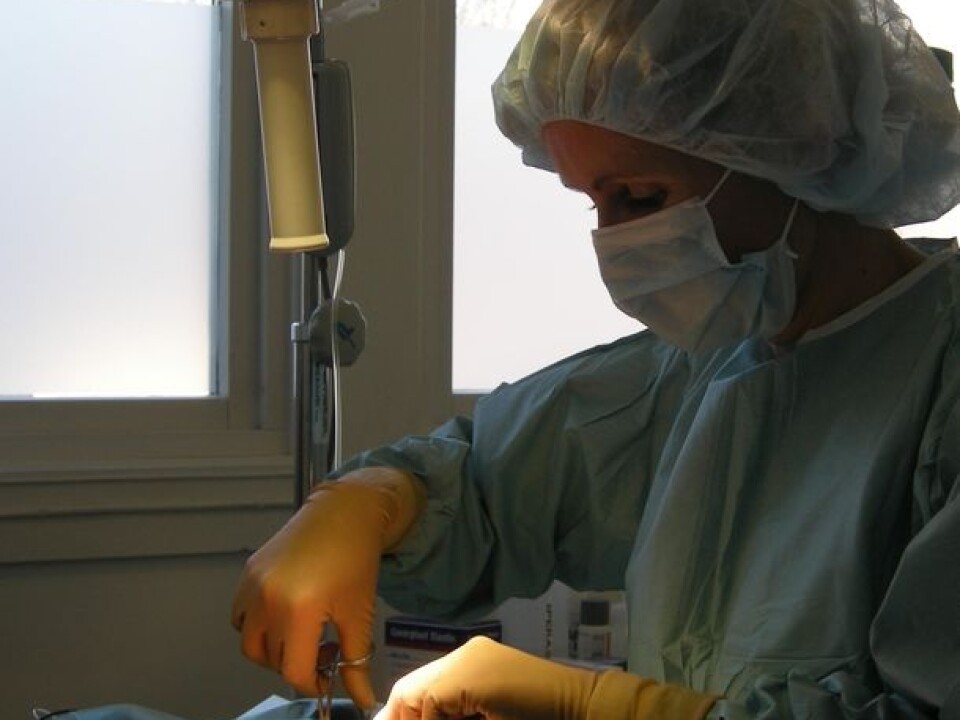
“Neutering can never be a substitute for proper training of a dog,” says Knævelsrud.
“The likelihood of diseases has to be weighed against the disadvantage of neutering,” she adds.
“As we see it the risk of healthy female dogs getting afflicted, with for instance a septic uterus or with mammary gland tumours, is not weighty enough to merit permitting spaying.”
Social neutering
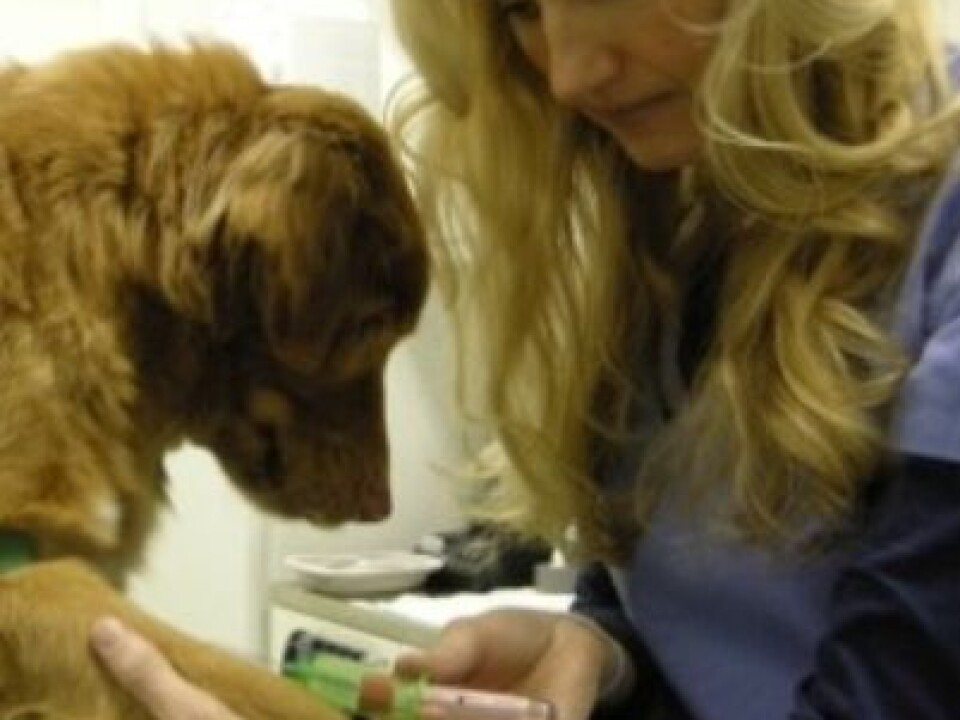
Norway’s Animal Welfare Act was amended in 2010, and its stipulation about neutering or spaying was relaxed.
The NFSA is currently working on a regulation under the new law. The government agency has stipulated here that the neutering of dogs is permitted when mandated by utility, or if it helps give the dog a justifiable quality of life, including social contact with other dogs.
“We know that the sex drive of some male dogs makes them aggressive against others. Dogs are social animals so in such cases a veterinarian could consider such a procedure in accordance with the regulation,” says Knævelsrud.
She stresses that the regulation has not been adopted as yet, but the hope is to get it passed in the course of 2012.
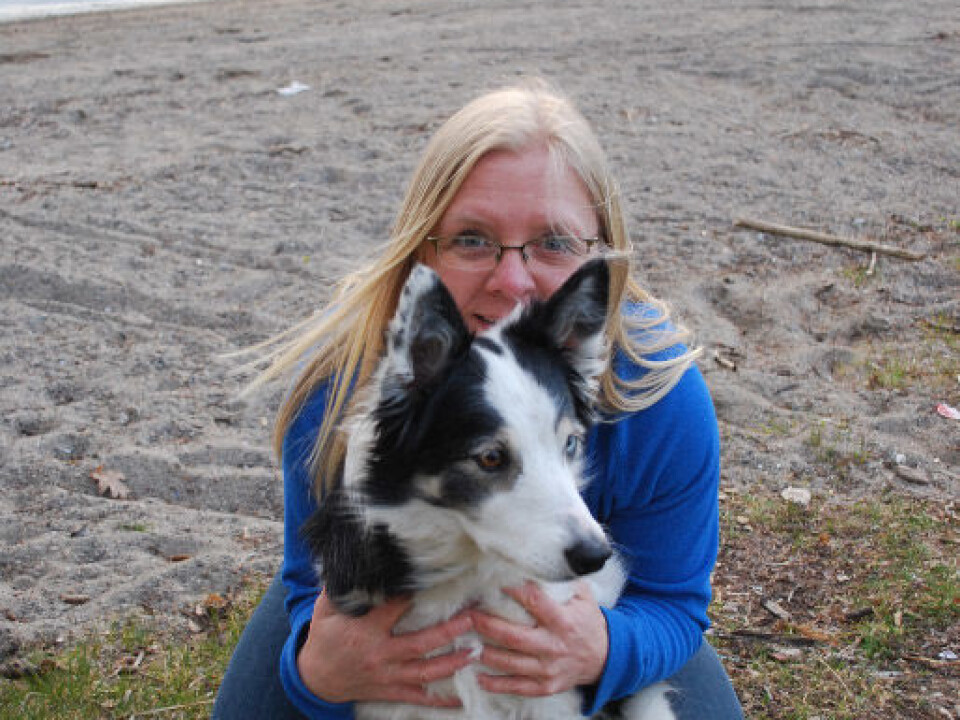
Variety of canine challenges
In the USA over 90 percent of male dogs are neutered, and in many cities and towns owners can be fined or their pets denied access to dog parks if the dogs haven’t had the procedure.
Knævelsrud thinks one reason why Norway have different legislation than the USA is that we don’t face the same challenges.
“Norway has no stray dogs and averts the problems this entails. When it comes to cats, we permit neutering, because they wander freely on their own and this can lead to homeless kittens, which in turn is an animal welfare problem. Keeping all cats inside would also be an animal welfare issue,” she thinks.
In the United States millions of dogs become homeless every year. Many are taken in by a local Humane Society or by dog-catchers, and those that are not adopted are put to sleep.
In an American study from 1996, un-neutered dogs were highly represented among homeless or strays, and owners named behavioural problems as a reason for giving up their dogs.
Lots of bite wounds in Norway
Therese Bienek got her veterinarian’s degree in the USA and worked there for a couple of years. Now she’s also been a vet in Oslo for two years.
She says her workday is affected by the fact that so few dogs are neutered and spayed here, compared to in America.
“I’d never sutured so many bite wounds on dogs as I’ve been doing since I got back to Norway.”
Bienek says she only treated one case of a dog biting another during her two years in the States.
She thinks that sex hormones lead to unnecessary stress and aggression among dogs.
Other problems she encounters in Norway are mammary tumours and uterine infections. The mammary tumours are the rough equivalent of breast cancer in humans.
“This was something I never encountered at work in the USA, but a quarter of the female dogs in Norway end up either having acute surgery or dying prematurely because of mammary tumours. This is a clear argument for preventive neutering and spaying,” says the vet.
A Norwegian School of Veterinary Science (NVH) pamphlet on mammary tumours confirms that every fourth female dog in Norway develops malignant tumours in the course of her life and it informs about how to prevent it:
It is well documented that spaying prior to the second estrus gives a dramatic reduction of the risk for mammary tumours later in life. In countries such as the USA, where the spaying of female dogs at young age is common, we rarely see mammary tumours. (translated by ScienceNordic).
Seeking an amendment in the law
“In adherence with Norwegian law I sometimes have to say ‘no’ to owners who wish to have their pets spayed or neutered, even though personally I think it would be for the best,” says Bienek.
She would like to see the responsibility for the decision passed over to owners and vets, rather than having either a legal ban or mandate.
“All the vets I’ve spoken with want to see the legal ban on neutering and spaying ended in Norway,” says Bienek.
“We think the pet owners’ opinions about neutering and spaying have to be given strong consideration,” says Torill Moseng, veterinarian and central board member of the Norwegian Veterinary Association (DNV).
DNV was involved in getting the amended subsection in the law.
According to Moseng there is rarely any problem with male dogs out in the countryside, but in cities they can be stressed by all the females nearby that are in heat, or by encounters many other male dogs.
"This can be a problem for the animals’ welfare," says Moseng.
Few disadvantages
Problems with overweight are often mentioned with regard to spaying or neutering dogs.
“They can become more obsessed with food and many also become less active,” says Moseng.
"However, this can be met by reducing food intake or by increasing exercise. Otherwise, the medical disadvantages of the operation are insignificant,” she explains.
Some females become incontinent, but that’s rare and veterinarians can often do something about it. Also coats can become curlier and less shiny, and the dogs tend to shed more.
"But as I see it spaying and neutering are not the cause of ailments,” says Moseng.
As mentioned regarding cancer risks, spaying is beneficial for females and the same applies to males and testicular cancer.
“They can’t get testes cancer when they don’t have testicles,” says Moseng.
She adds that prostate gland problems are also sharply reduced by neutering.
Moseng stresses that she and DNV absolutely wish to avoid exposing animals to unnecessary surgery.
Growling and barking
Joppe the dog had to stay at the veterinary clinic for four days before he could come home from his surgery.
His health has improved but his owner Nina Thorstensen is concerned about his behaviour. Walks have become a hassle because Joppe growls and barks at every dog he sees.
The vet has assured Nina that hormones can run wild the first weeks after a dog is neutered and this problem will surely diminish when they stabilize.
However, after a month of such noisy walks Nina still wonders whether the neutering has ruined Joppe.
Could get worse
Gry Løberg runs the behaviour clinic Manimal. She’s an ethologist, which is a branch of zoology dealing with animal behaviour.
Løberg deems it important for dog owners to get a thorough evaluation from a professional before deciding on spaying or neutering, because it can aggravate a dog’s behaviour.
“Most dogs with behavioural problems have fear aggression. If you neuter one of these the aggression can take a turn for the worse,” says Løberg.
She explains that testosterone makes male dogs tougher, and when you reduce the testosterone level of a dog that is already afraid its fear can intensify.
The behaviour therapist favours neutering in some circumstances, preferably right after the dog reaches sexual maturity, as this can be a useful measure with regard to sexually motivated behaviour.
“If the behaviour has continued for several years then accrued behaviour can be more significant than the play of hormones. Neutering within a couple of months after the unfavourable behaviour starts will give the best effect,” Løberg adds.
Liberalisation
Løberg has noticed that more dogs are neutered or spayed than before.
“I’m experiencing much more acceptance for neutering and spaying among the public, even though our legislation is against it.”
She thinks this could be attributed to a mounting number of vets getting their educations abroad, where the practice is more common, and they bring this culture home with them to Norway.
Although Løberg sees the positive aspects of neutering and spaying, she doesn’t think Norway should copy the USA.
“You have to decide each case individually to determine the cause of the behaviour. I would clearly take a stand against neutering and spaying as a preventive measure," she says.
In 2009 Løberg compiled some research articles on the subject for a feature in the Norwegian Kennel Club’s magazine.
This referred to a study conducted by the researchers Hart and Eckstein about how neutering affects behaviour.
Occurrences of humping were reduced by nearly 70 percent in the study, and fighting was reduced by over 60 percent.
Nevertheless, the researchers saw no change in territorial aggression.
The study emphasised the fact that it made no allowances for potential changes in the owners’ behaviour toward their dogs after these were neutered.
Christmas in the air
A crackling fire is burning in the fireplace. Joppe is curled up in his favourite spot on the sofa while Nina pets his back. Two months have passed since he was neutered.
The owner has come to the conclusion that Joppe probably was suffering long before he indicated it.
“He seems really satisfied now and is a happier dog than he was prior to being neutered.”
The hormonal barking from the weeks after the operation has also stopped.
“I don’t think all dogs should be neutered, but for Joppe this was definitely the right thing,” says Nina, with her eyes on her pet, who is asleep now with his head on a sofa cushion.
—————————————————————————-
Read the article in Norwegian at forskning.no
Translated by: Glenn Ostling
Scientific links
- Patronek, G.J., Glickman, L.T., Beck, A.M., McCabe, G.P., and Ecker, C, Risk factors for relinquishment of dogs to an animal shelter, Journal of American Veterinary Medical Association, 1996 (Abstract)
- Hart, B. L., & Eckstein, R. A, The role of gonadal hormones in the occurrence of objectionable behaviours in dogs and cats, Applied Animal Behaviour Science,1997 (Abstract)







